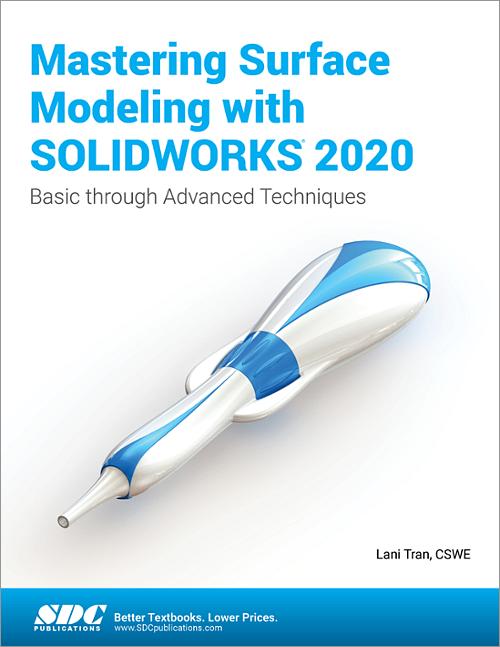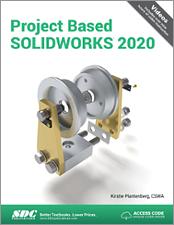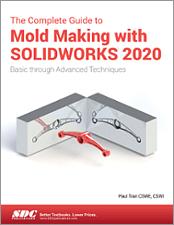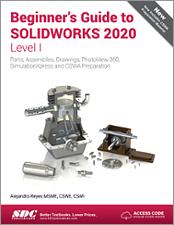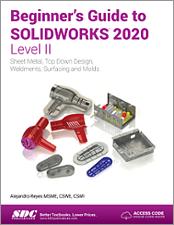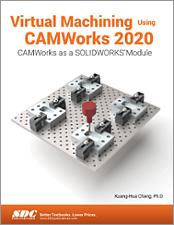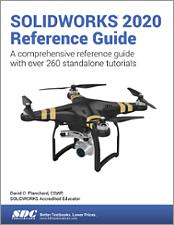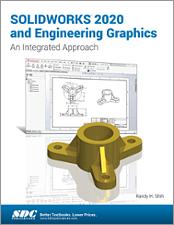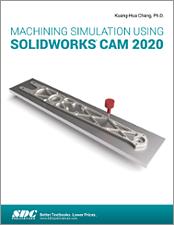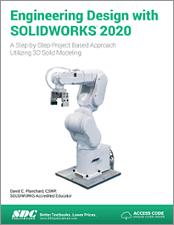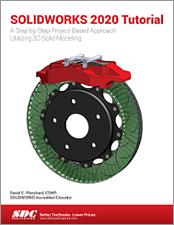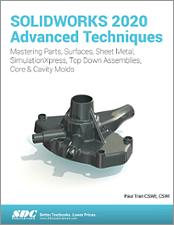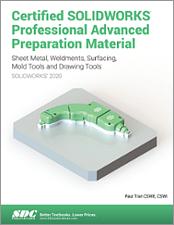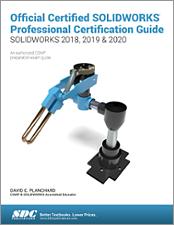Mastering Surface Modeling with SOLIDWORKS 2020
Basic through Advanced Techniques
- Description
- Contents
- Downloads
- Instructor Resources
- Details
Description
Key Features
- Teaches SOLIDWORKS users advanced surface modeling skills
- Includes tips and techniques for hybrid modeling
- Uses clear, step-by-step instructions to help you create real-world projects
- Covers how to make molded parts and repair and patch surfaces
In Detail
Mastering Surface Modeling with SOLIDWORKS 2020 focuses on surfacing tools, an important aspect of SOLIDWORKS’ design capabilities that fills in the gaps that might be left by using solid modeling alone. If you are a SOLIDWORKS user currently relying on solid modeling for designs, or are just not familiar with surface modeling techniques, this book will add these skills to your repertoire to help you create the highest-quality models. For instructors teaching this advanced skillset, this book’s proven techniques, practical examples and training files will give students a broad understanding of the procedures needed to build freeform shapes and place them well on their way to creating sophisticated surface designs of their own.
This manual is one of only a few on the market completely dedicated to mastering surfacing tools. Each of the ten chapters has clean, clear instructions with plentiful diagrams to lead you through carefully selected exercises based on the author’s own work experience and techniques. You are guided from a review of surfacing basics, to advanced surface modeling of real-world objects, to an explanation and example of hybrid modeling, to surface repairs and patches. Peruse the table of contents and pick and choose the chapters you are interested in or complete all chapters consecutively to give you an in-depth understanding of all the tools and procedures needed to create surface designs.
The projects you will work on in this book include a shoehorn, computer mouse, phone case, a modem housing, and stents. Woven into each of these are procedures, approaches and solutions for possible issues that might arise when you are using surfacing tools. These can be applied to any project you create. Each project touches on a variety of frequently used commands such as extrude, loft, boundary, and sweep; surface revolved, filled, split, and knit; using deform and configurations; mirroring bodies; creating an axis, curve driven and circular patterns, fillets, and molded parts. Look for the post-it notes next to commands for helpful tips and definitions.
Throughout the book, you will learn techniques of hybrid modeling, the combination of surface and solid modeling. The last part of the book takes it one step further. Chapter 8 examines hybrid modeling in-depth, guiding you step-by-step from a 2D sketch to the final product, a handle housing. The last two chapters focus on molded parts, creating and saving visual properties of models and how to repair faulty surfaces. The advanced surfacing tools and techniques in this book give you the confidence to tackle projects using hybrid modeling. It is the best method to take full advantage of SOLIDWORKS’ modeling power and create more complex designs.
Topics Covered
- Extruded surfaces
- Knitting surfaces
- Loft surface
- Boundary surface
- Sweep surface
- RealView graphics
- Trimming surfaces
- Mirroring a surface body
- Revolved surfaces
- Using deform
- Using configurations
- Trimming a sketch
- Thickening a model
- Creating an axis
- Creating a circular pattern
- Molded parts
- Surface repairs and patches
- Curve driven patterns
- Hybrid modeling
Table of Contents
- Introduction to Surfaces
- Surfacing Basics
- Using Boundary and Lofted Surface
- Surface Creation
- Using Filled, Knit, & Boundary Surface
- Using Trim, Thicken, & Configurations
- Curved Driven Pattern & Flex Bending
- Surfaces and Solids - Hybrid Modeling
- Mold Tools, Intersect, & Display States
- Surface Repairs and Patches
Glossary
Index
Downloads
For additional information on downloading, unzipping, and using these files visit the downloads section on our Frequently Asked Questions page.
Instructor Resources
The following downloadable resources require that you are registered, logged in and have been authenticated as an instructor.
Product Details
| Publisher | SDC Publications |
| Authors | Lani Tran CSWE |
| Media Types | Print Book, eBook |
| Primary Languages | English |
| Published | December 5, 2019 |
| User Level | Intermediate - Advanced |
| Pages | 208 |
| Binding | Paperback |
| Printing | Black and White |
| Print ISBN | 978-1-63057-329-4 |
| Print ISBN 10 | 1630573299 |
| eBook ISBN | 978-1-63056-555-8 |
